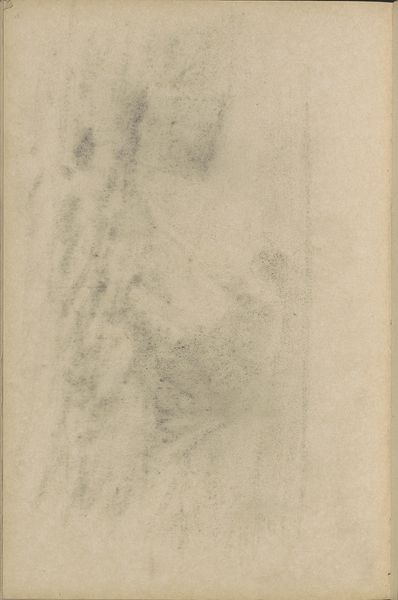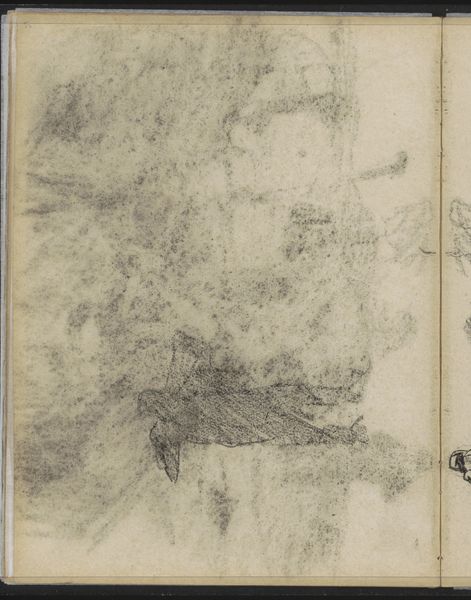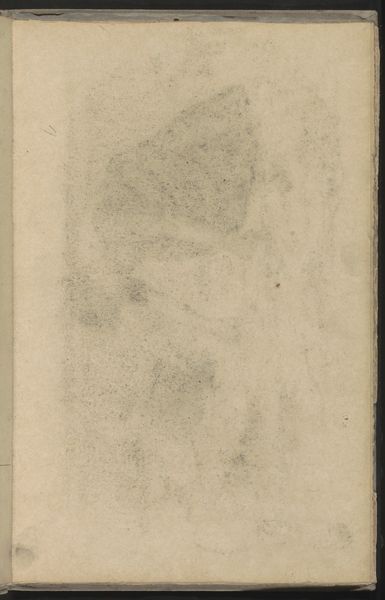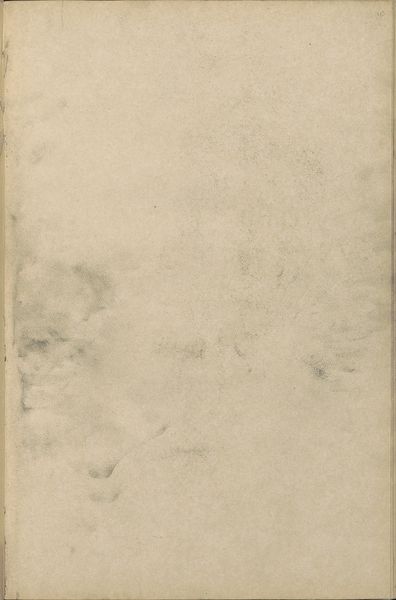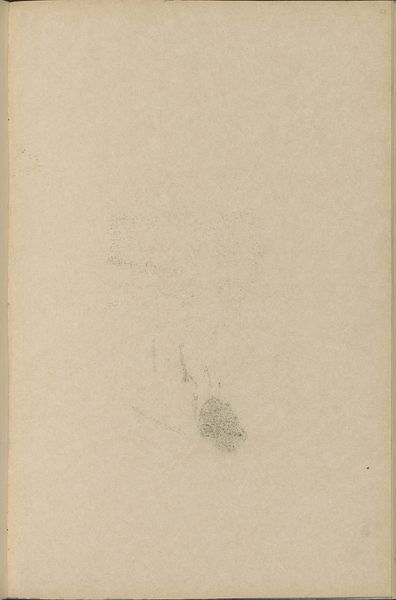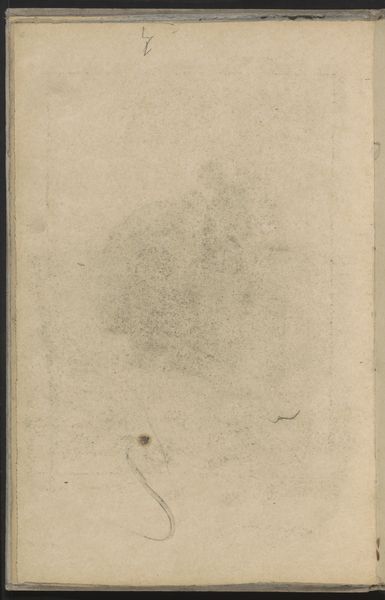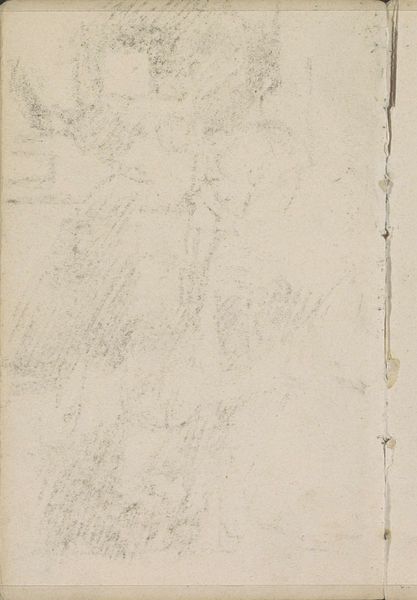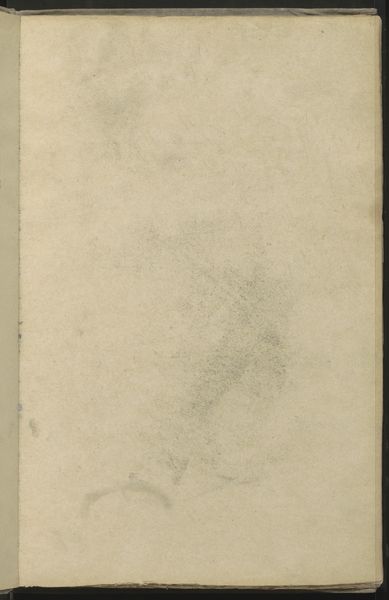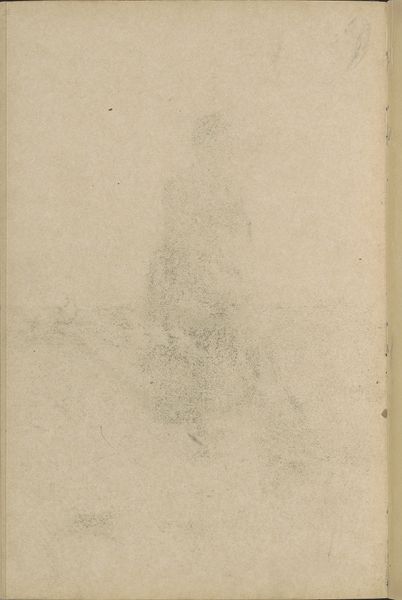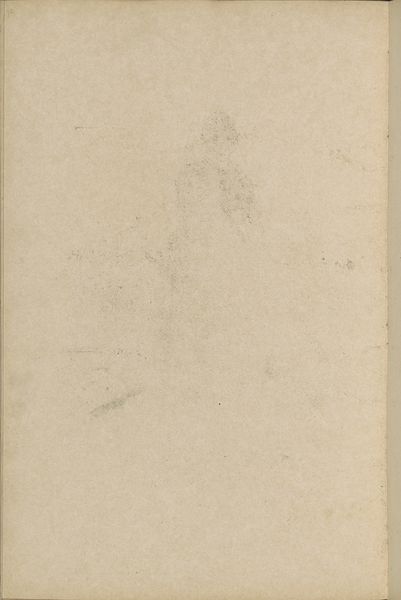
drawing, paper, pencil, graphite
#
pencil drawn
#
drawing
#
pencil sketch
#
paper
#
pencil
#
abstraction
#
line
#
graphite
Copyright: Rijks Museum: Open Domain
Curator: This is "Studieblad," a drawing by Willem Witsen, likely created between 1884 and 1887. It's a pencil and graphite sketch on paper. Editor: Well, it’s... spare. I’m immediately drawn to the texture created by what looks like very broad strokes of graphite down the right-hand side, contrasting sharply with the near-empty space elsewhere. Curator: Precisely! Witsen’s application of materials here is very telling. This wasn't meant for public consumption. The quick, almost haphazard strokes indicate its function as a preparatory sketch. This was purely about the process of making. Editor: That makes sense. It's almost as if we are looking directly into Witsen’s process. I find myself considering how study sheets like these fit within the broader art market and exhibition practices of the period. Were they ever intended for display, or are they inherently private, a peek behind the curtain? Curator: Intriguing question. Think about the cost of materials—the paper, the pencils—were relatively inexpensive but necessary commodities. This hints at the burgeoning market for artists' materials that allowed even artists of moderate means to explore and experiment. Editor: And the institutional role? Would a piece like this, in its apparent incompleteness, have been considered "art" by the gatekeepers of taste at the time? The museums, the critics... their perceptions defined what constituted art. Curator: The sketch form itself challenges those gatekeepers. It suggests that the act of creation, the labor, holds inherent value. Perhaps it subtly critiques the idea of art as solely a finished product destined for bourgeois consumption. Editor: So we have a drawing, executed in readily available and affordable materials, that likely functioned outside the established exhibition spaces but might offer insight into art's development during that period, potentially broadening who gets to be called an artist? Fascinating. Curator: Exactly. It prompts a re-evaluation of what constitutes 'art' and compels us to look beyond the gilded frames. Editor: A nice reminder to question established norms and appreciate the artistry present in seemingly simple means.
Comments
No comments
Be the first to comment and join the conversation on the ultimate creative platform.
